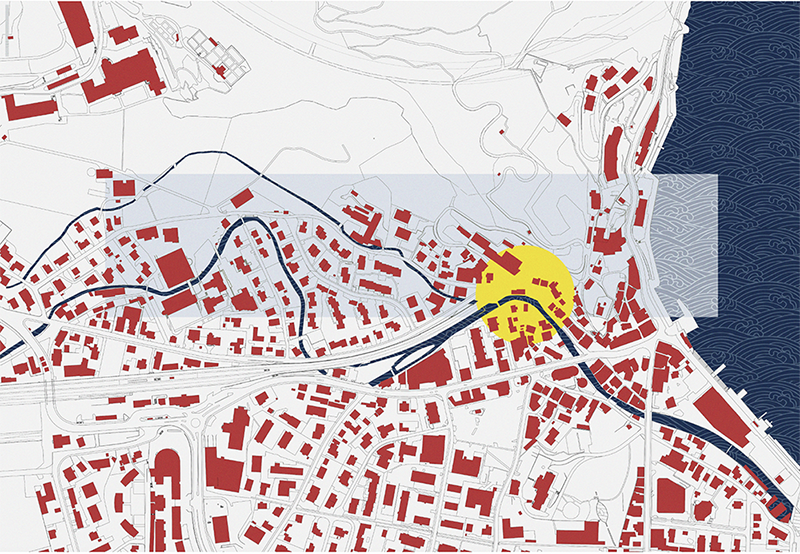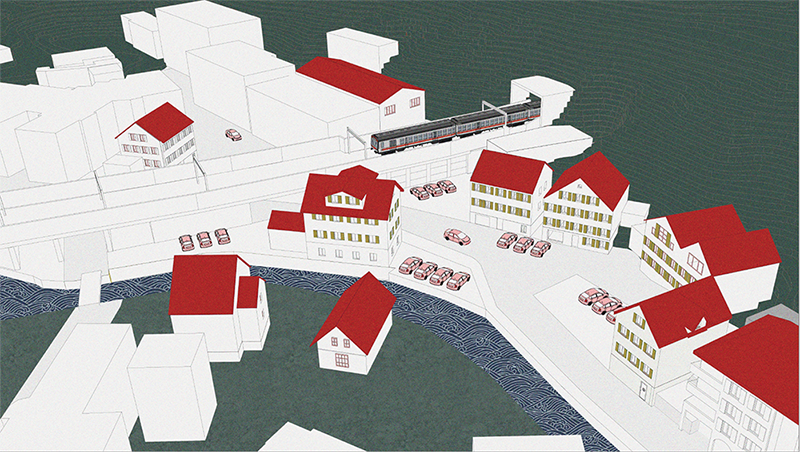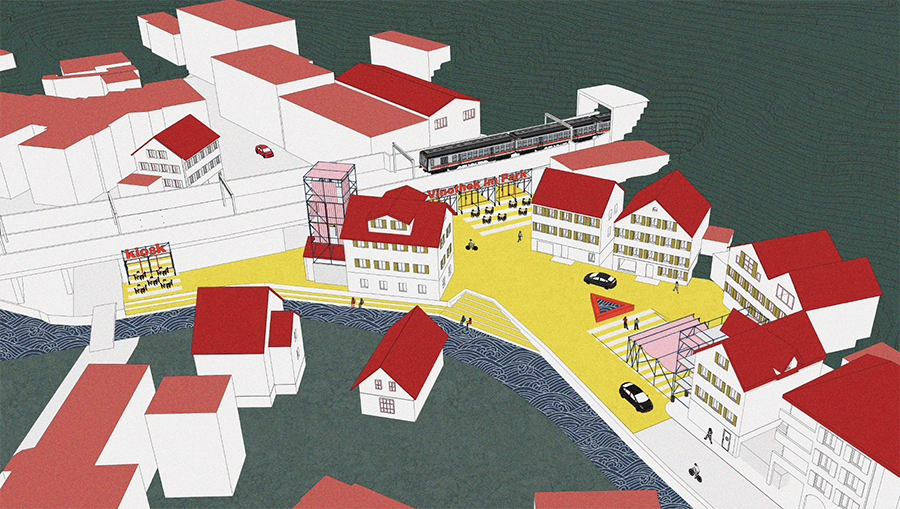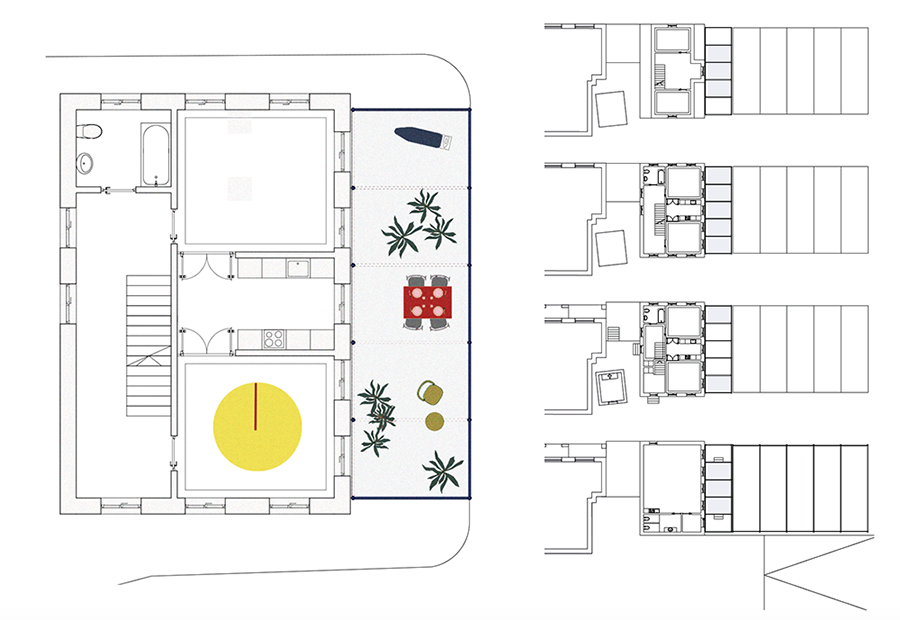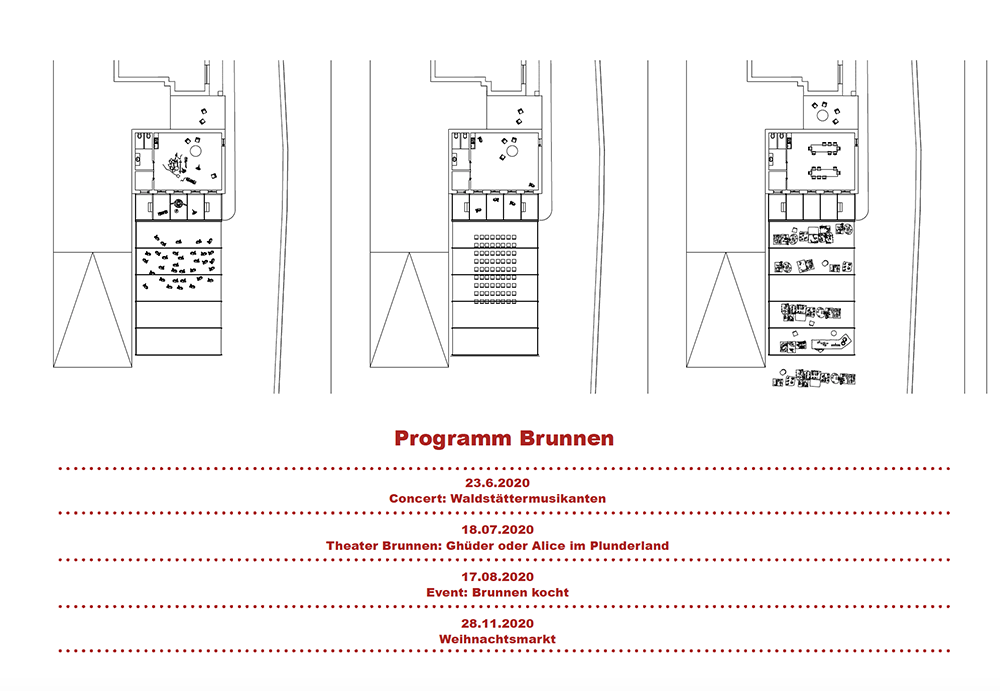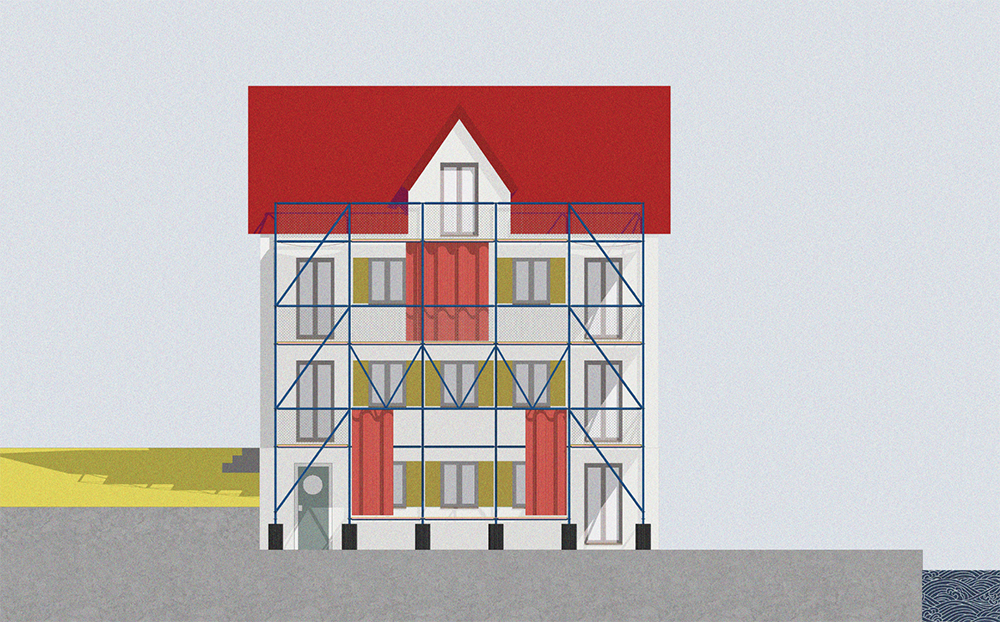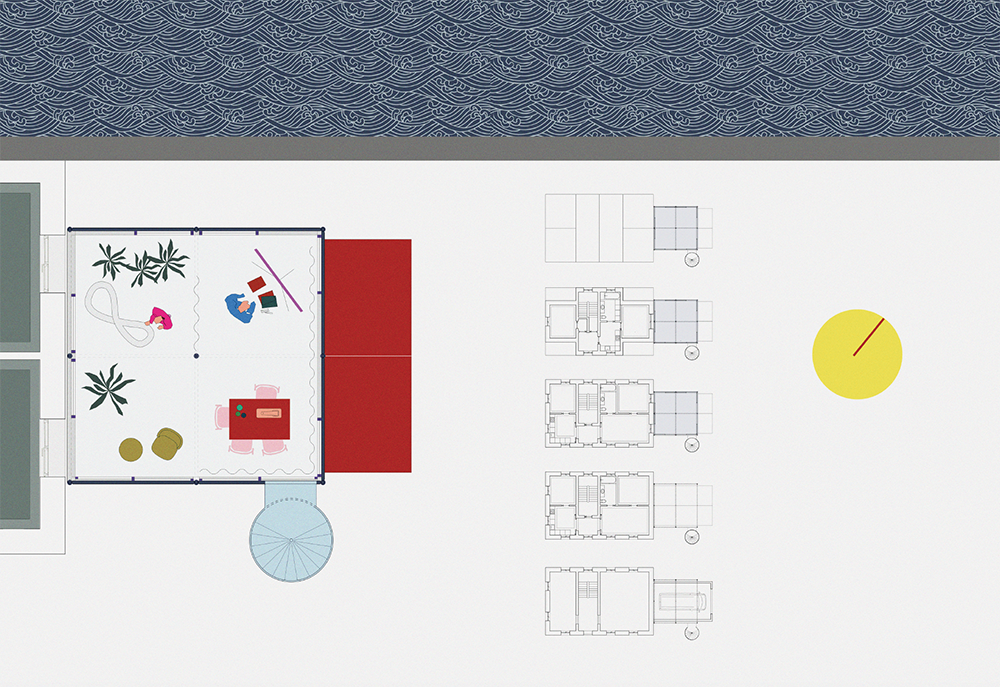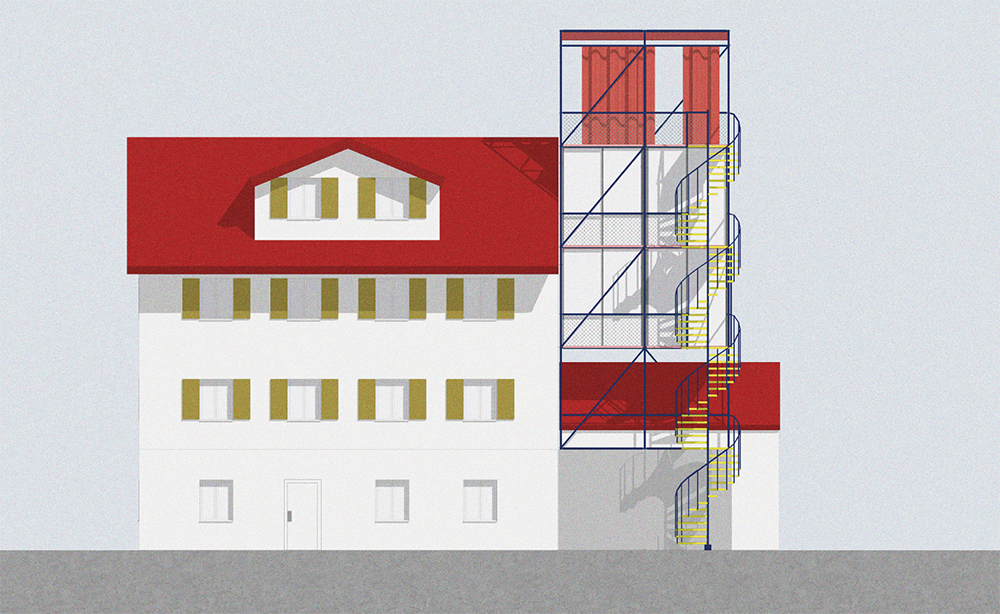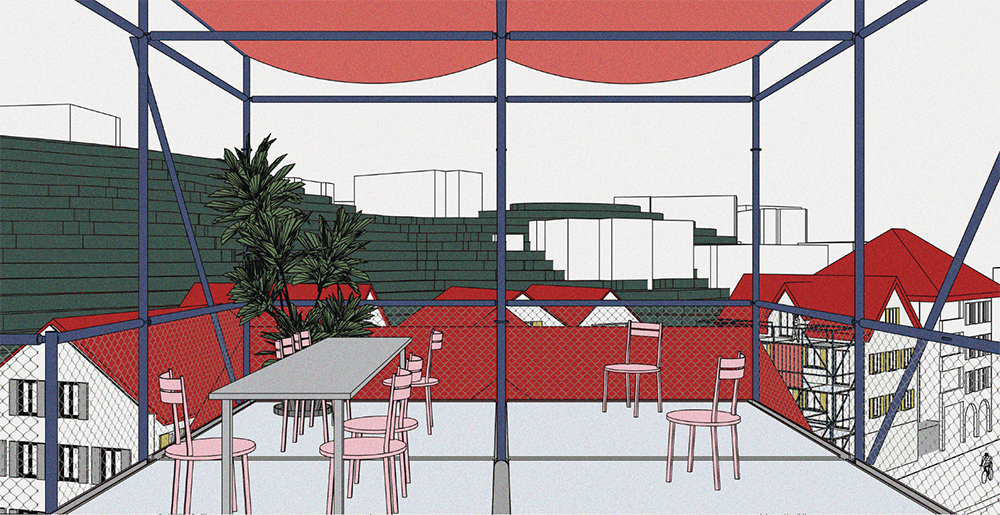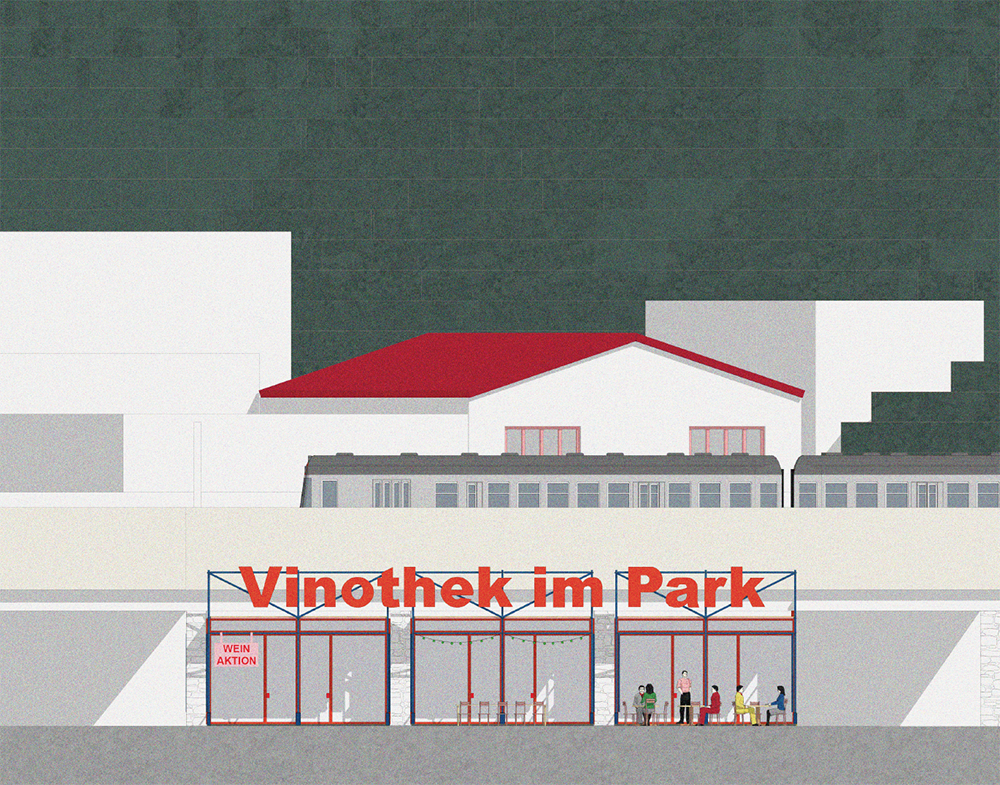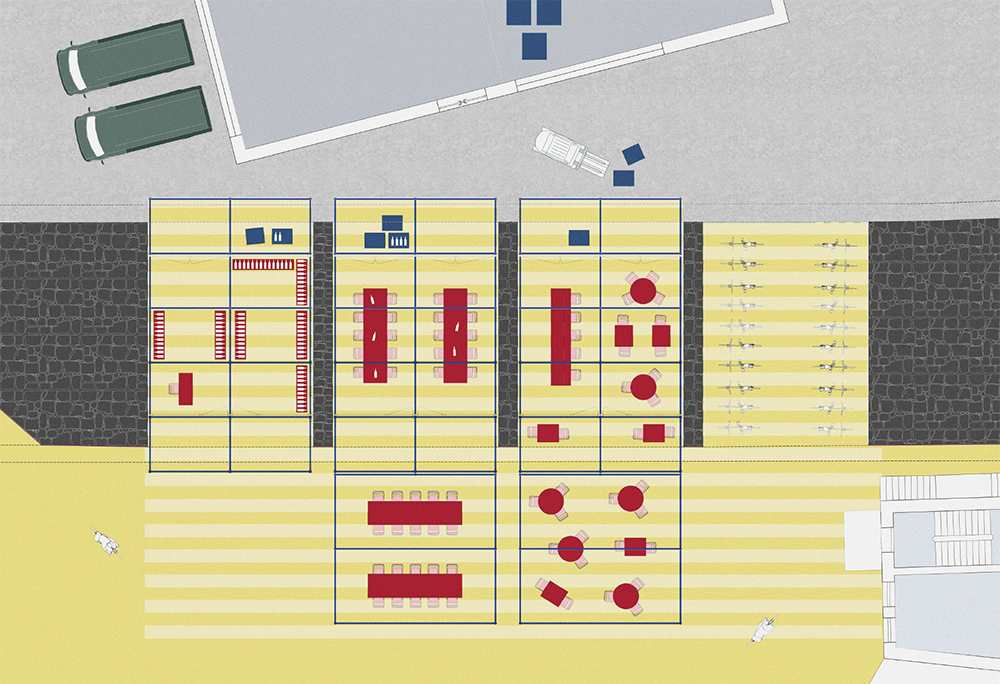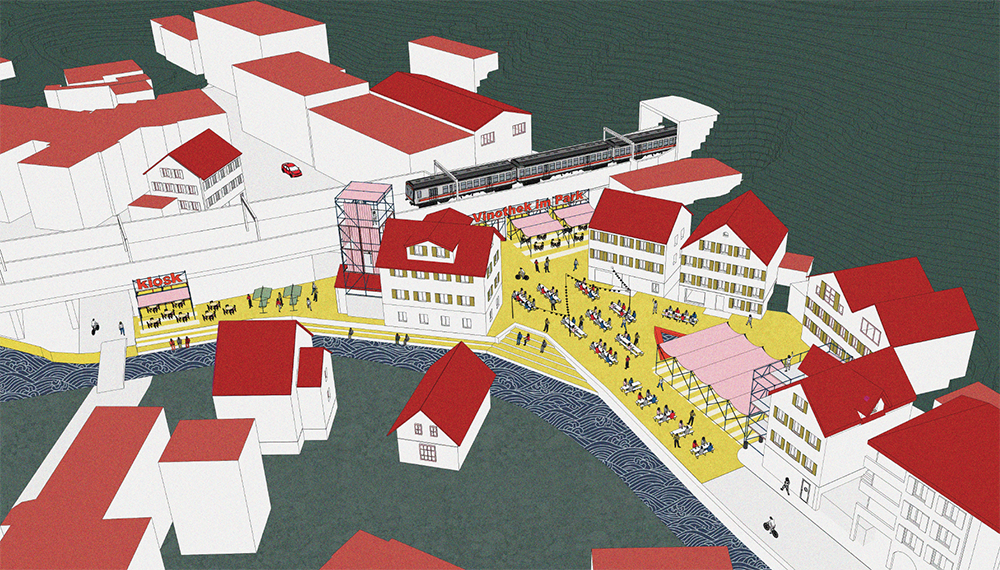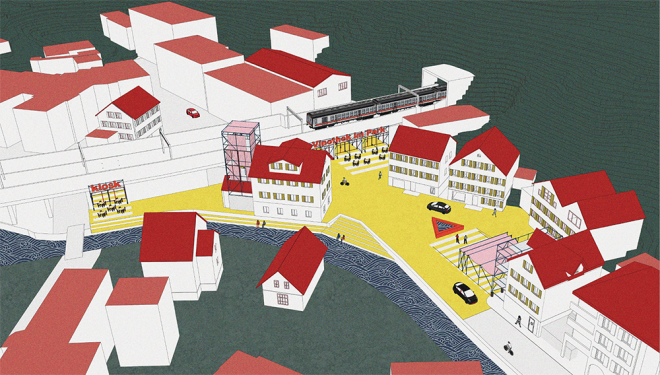The Culture of Water 水と文化
Water & Beauty
FS20 Architecture & Structure
HSLU Teaching Team: Prof. Annika Seifert, Prof. Luca Deon, Mulan Sun (孫慕蘭)
KIT Teaching Team: Prof. Masahiro Kinoshita (木下昌大), Prof. Hiroyuki Kimura (木村浩之), Meng Sun (孫夢)
Student: Jana Mulle
_________________________________________________________________________________________
The site can be seen as a nodal point within Brunnen. The mountain comes down to the village. The river follows the topography of the mountain. The railway crosses the roads and the river and disappears into the tunnel. Different types of buildings and therefore different uses meet each other. Nevertheless the place is not dense and dominated by parking lots.
The question is, what can be added, to give the village a new sense and enhance the diversity of the place. Some small interventions offer extra spaces for the residents and give a new face to the public space. The interventions are attached to the existing buildings and infrastructure. It is added, what is necessary to improve the private space for the people living there but also to improve the public space. Places to be and to rest are created along the river. The structures form balconies or winter gardens for the residents. These extra spaces can be used for different activities and change according to season and weather. In addition, a stage integrated into the structure is created, which can be used for various occasions and thus also occupies public space. A bar, a wine shop and a room for wine tastings will also be built in combination with the existing wine trade. The interventions should interact with the public space. The structures can be used as a framework for lighting or music and also the people staying in the open extra spaces interact with the public space.
The buildings have a temporary character and are built very simple. A steel construction, built in the same way as the scaffolding on the construction sites, is used. This is due to the fact that the existing buildings are old and no longer in good condition and will be replaced in the future. The architecture should allow changes of the place and be adaptable.

